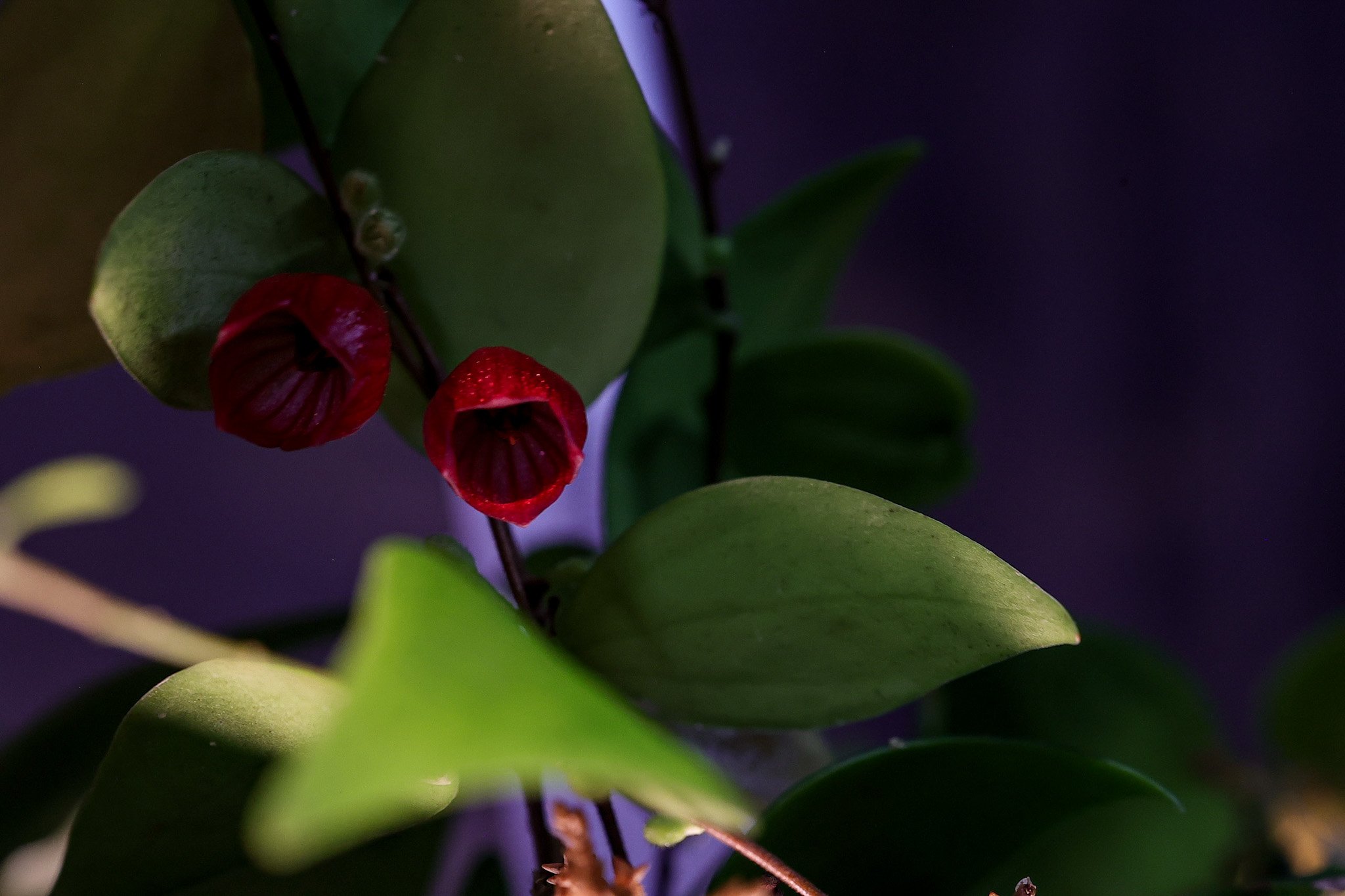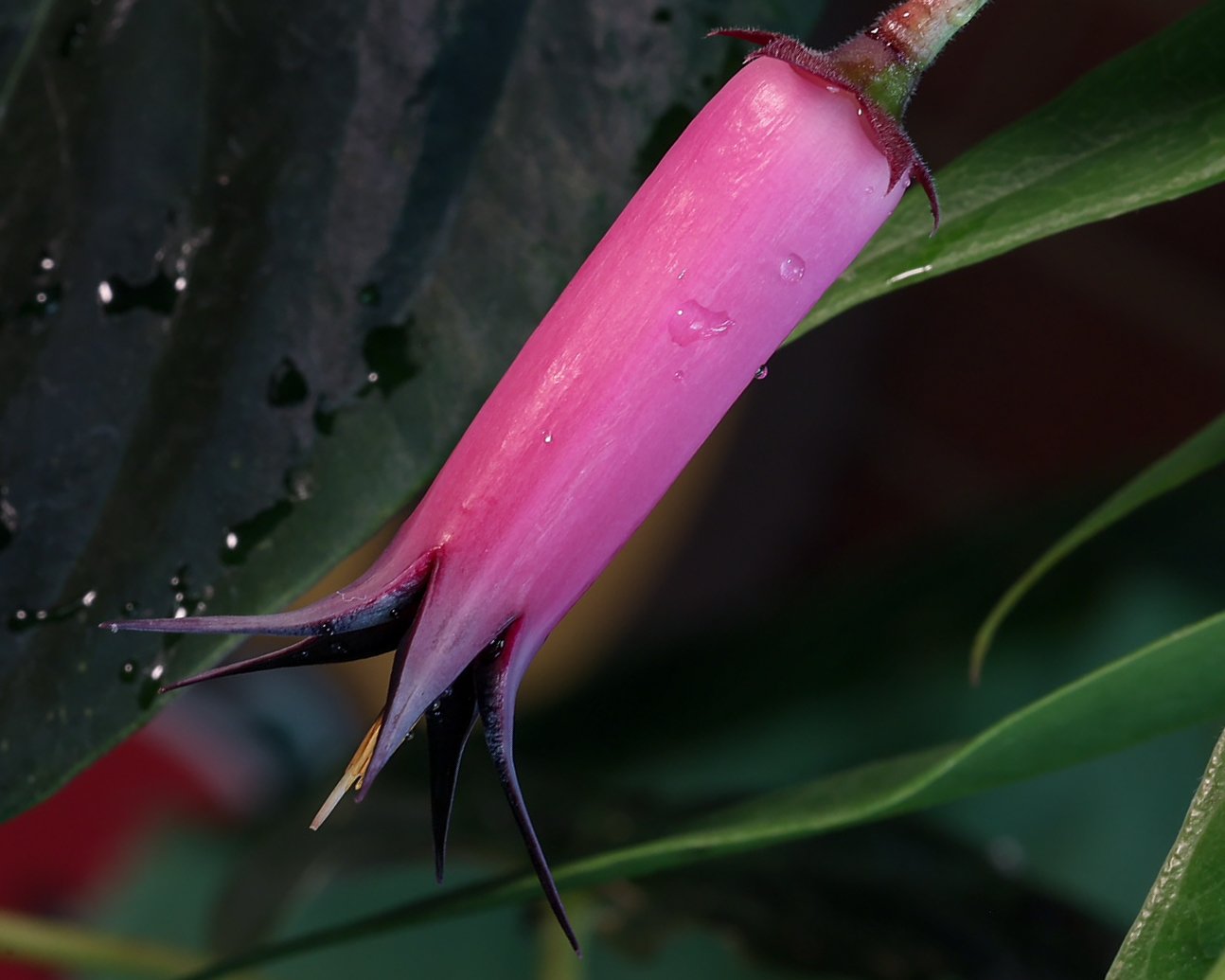My Neotropical Blueberry Nights
NeoBBs
quick notes
if you just want a quick sip of the tea on these NeoBBs, then this section is for you.
Okay Neotropical blueberries is a lot to say every time: I’ve seen Ericacs thrown around as shorthand, “The Otherworldly Superfruits from the Cloud Forest” has a nice ring to it, “Montane Vaccinium of the New World”, ahhhh forget it, I’m going with “NeoBBs”—feels simple and modern.
Here is a list of highlights I’ve mined from the NYBG’s article, Jay Vannini’s article, and my own observations as one of the first private collectors in the US to grow these plant indoors.
Neotropics refers to the tropics of southern Mexico and down into South America: Costa Rica, NW Colombia, Ecuador, Peru, Panama, Venezuela.
94% of Neotropical blueberries from this region
Vigorous growers: often the dominate feature in mountainous landscapes.
Love the sun.
Get huge: several species over 6ft tall.
Will do well in a grow tent.
Do not mind being root bound- several of mine have reached 2ft+ branch lengths with cluster of berries in 4” pots, but will be happiest in a 6” azalea pot.
Some species can mutate from terrrestrial to epiphytes. Mine do great hanging near the grow lights of my grow tent in hanging baskets filled with chunky mix, pure sphagnum(least recommended once rooted), or 100% tree fern fiber.
According the NYBG website NeoBBs will often be the first types of plants to show up in a newly made gap in the dense vegetation of their habitats. If a new logging road is cut or a fire breaks out these Neotropical Ericaceae will be the “pioneer plants” and show up first ready to thrive.
Easy to prop (branch cuttings in sphagnum in a humidity dome under LEDS does great) though roots can be fine and will need time to get well established. (use code ARTHURIUM for a 15% discount on propagation equipment from AC Infinity.)
Ceratostema silvicola is my third Ericaceae species and will not be the last. It is the flowers that draw you in, but the “neotropical blueberries” of the Ericaceae family have a lot more to offer. I’m a collector of foliage anthuriums, but when I first caught a glimpse of the otherworldly grouping of flowers belonging to Ceratostema amplexicaule in Jay Vannini’s online magazine; an infatuation began. Sadly this love story is between a guy in his 30s and some plants with cool flowers and not a melodramatic tale of star crossed lovers featuring Norah Jones, Jude Law, and directed by a master of the bold color like Wong Kar Wai—but the cinematic auteur with his flare for vivid colors may enjoy the pigment-saturated corollas of some of these neotropical Ericaceae. These little flowers belong to the same family of plants as the blueberries commonly used in culinary practice around the world, but also to the same family as rhododendron which I’ve observed countless times towering over mountain streams at 1500 meters above sea level in Pisgah National Forest. For some reason the paradoxical nature of these flowering montane specialists was alluring. I was immediately interested in discovering how it is possible that the giant North Carolina native Rhododendron catawabiense, the blueberries in my muffin, and these most exotic of flowers are all even from the same planet, much less same taxonomic family.
My affinity for the rhodies of the Blue Ridge (Rhododendron catawabiense & Rhododendron maximum) is deep rooted in family hikes on the Art Loeb trail and all along Looking Glass creek during the temperate months of the year here in North Carolina where we live.These giant “rose trees” can domineer landscapes and flood creeks with their spent floral payloads (per obs). Rhododendron maximum prefers valleys and areas where a fairy and their mischievous friends may frolic on a lichen laden log, blooming its massive white to ice-pink blooms and sporting a full plumage of elipidote leaves (per obs. http://www.donaldhyatt.com/articles/EasternElepidotes-03-illustrated.pdf ) Meanwhile, Rhododendron catawbiense can be found with windstripped leaves shocking a craggy limestone outcropping with an almost offensive lavender outburst.
Turns out Ericaceae are found all over the world from Patagonia and Peru to Japan and North Carolina you can find memebers of this substantial botanical family. Of the neotropical Vaccinieae discussed here there are over 500 species and 30 genera that are found nowhere else in the world (Luteyn, J. L. & P. Pedraza-Peñalosa. 2012). This means that the cloud forests of the Neotropics are unusually rich with the distribution of these intriguing Ericaceae. This type of biodiversity is found in few other places on earth Andean cloud forests are majestic ecosystems which must be protected at all costs.
Please never eat the fruits or any part of an unknown plant without consulting an expert. Many intriguing and delicious looking plants are highly poisonous, including some of these tropical mountain berries we’re discussing here.
“Extreme superfruits” is the term coined by Dr. Kennelly of Lehman College in The NYBG Plant Talk blog from March 8 2012: Neotropical Blueberries (M.Newman 2012) in regards to the abundance of nutritional value found in some Neotropical Ericaceae, specifically antioxidants. The montane Vaccinieae endemic to the Andean Highlands are not only of potential nutritional value to higher primates looking to help reduce blood pressure but are of paramount importance in their native cloud forests where they are a food source to many species(Luteyn, J. L. & P. Pedraza-Peñalosa. 2012 onward. Blueberry relatives of the New World tropics (Ericaceae) (https://sweetgum.nybg.org/ericaceae/index.php). The New York Botanical Garden, Bronx, New York.) Many of these Ericaceae species grow in acidic soil and on rock outcroppings at high elevations, meaning that food sources are extremely scarce and these nutritious neotropical blueberries are an even more vital resource than they would be in more fertile forests habitats (Luteyn, J. L. & P. Pedraza-Peñalosa. 2012).
Ceratostema silvicola was first collected in the Pastaza region of Ecuador by the intrepid botanist Ynes Mexia. This premontane riparian forest area of Ecuador is highly inacccesible with the river itself traversing volcanoes and slicing through impassable mountains after escaping the tropical forests. Having collected over 1500 species, Mexia’s work is a valuable contributor to science’s understanding of Amazonian flora. Ynes Mexia did not even become involved with botanical exploration and collections until she was in her fifties at which point she traveled the entire 3000+miles of the Amazon River and collected vast quantities of material that was deposited in herbariums around the world (ops.gov/people/ynes-mexia.htm). Most of Mexia’s work was in Peru and Mexico, but one of the 145,000 specimens she collected was the type specimen of Ceratostema silvicola which is currently held in collection at the National Museum of Natural History in Washington DC (gbif.org/occurrence/1321181559, nybg.org/blogs/science-talk/2015/02/late-the-short-prolific-career-of-ynes-mexia/). Mexia often traveled alone through impossible terrain and was vehement in her defense of the rights of marginalized communities as well as preserving our home planet. Her story is a true inspiration to anyone, whether a lover of plants or not.
It is not just the flowers and fruits that make these Neotropical blueberries of ornamental-horticultural value; plants like Ceratostema villosa and Ceratostema rauhii have foliage that makes some of the most elegant hanging baskets one can display in a plant collection. I’m currently growing this Ceratostema villosa in NZ sphagnum moss and have seen substantial new leaf development since the trip from Ecuador. I will be propagating this, and all Ericaceae species as fast as possible as recommended in Jay Vannini’s Neotropical Blueberries in Nature and Cultivation; just in case a sudden crash occurs.
Ceratostema aff. zamorana is another species of exotic Ericaceae and with electric magenta corollas trimmed in aubergine, and is the most exciting species I have in my collection. This species is still undescribed and “zamorana” is a reference to the Zamora-Chinchipe Province in the southeastern Amazon basin region of Ecuador. The intense colors on display below by Ceratostema aff. zamorana would be the most inspiring showing of color in my collection to any fan of the striking cinematic boldness of a director like Wong kar-wai (visionary director for films including My Blueberry Nights, 2007). The Ceratostema aff. zamorana I’m growing here in N.C. has stabilized and is producing new growth rapidly after settling in after its journey from the Bay Area. I have created a “cloud tent” just for plants that prefer the high humidity and cool nights of the cloud forest and have hopes that this will allow the dramatic reemergence of the technicolor corollas that first captivated me when Ceratostema aff. zamorana burst onto the stage here in N.C.
Sphyrospermum dissimile (S.F. Blake) Luteyn is a member of the Ericaceae that ranges from Costa Rica up through Peru where it inhabits a wide range of elevations. This plant is a fast grower so far here indoors in NC, and produces a never-ending supply of flowers.
Conservation. Many of these Neotropical Ericaceae are endemic to very small geographical areas, this means that one road cut through the Andean highlands could eliminate an entire species of these tropical heathers before we even get a chance to discover all the secrets they possess. I have included a link to several conservation efforts that are focused on helping to preserve the culture, people, and land of the Neotropics.
https://www.quechuabenefit.org












































